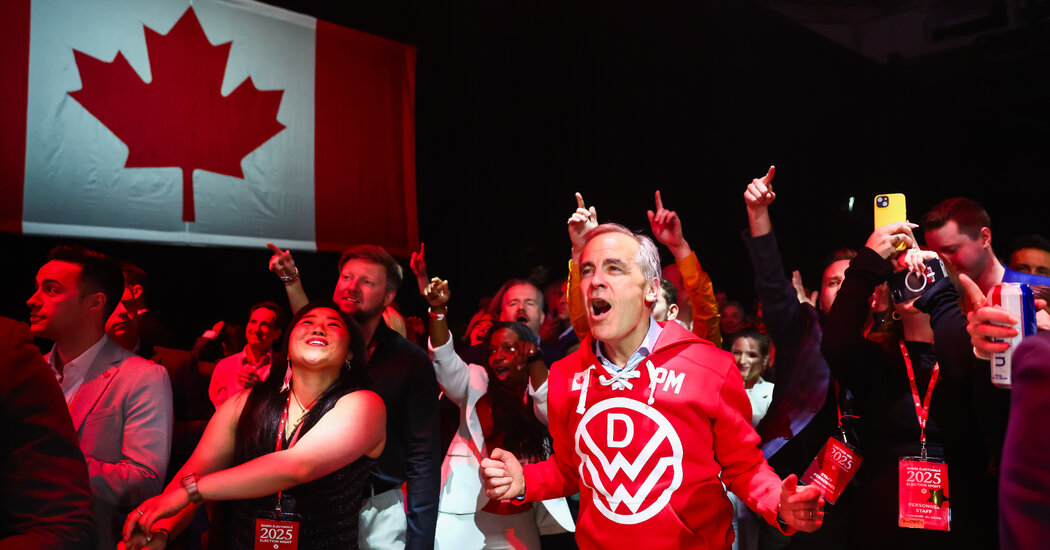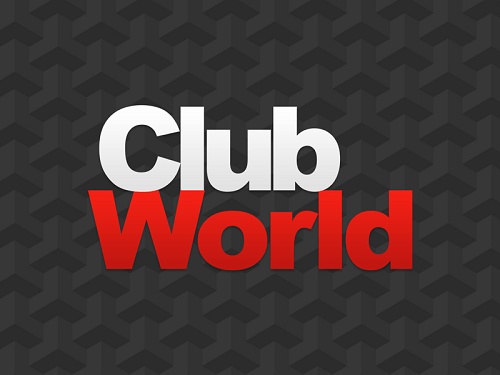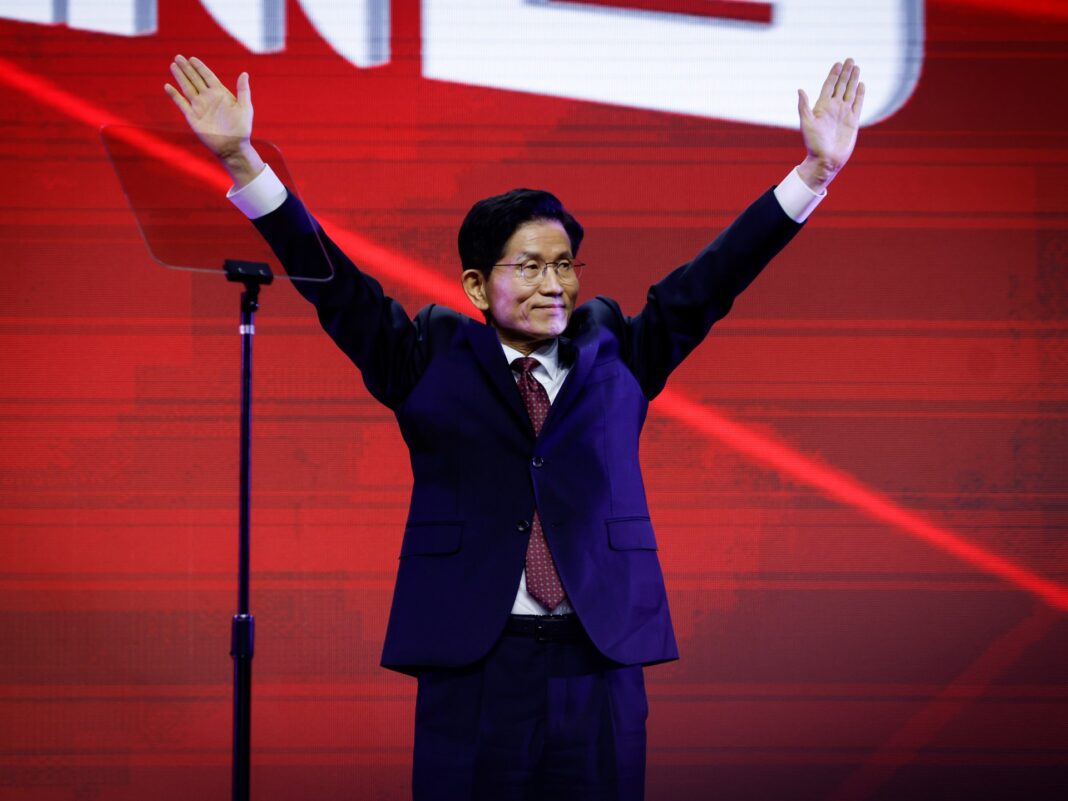Four days after winning his first elected office and leading the Liberal Party as it held onto power, Prime Minister Mark Carney laid out a timetable and a broad legislative agenda for his new government.
At a news conference on Friday, Mr. Carney’s big announcement was that he would head to Washington on Tuesday to open negotiations with President Trump on economic and trade issues. The United States’ 25 percent tariffs on Canadian-made vehicles, steel and aluminum had, of course, loomed large during the campaign.
[Read: Canada’s Prime Minister to Visit Trump Amid Trade Battle]
And on Election Day, the U.S. president had once again repeated his vow to annex Canada as the 51st state.
[Read: Even on Canada’s Election Day, Trump Again Insists Country Should Join U.S.]
But Mr. Carney said that when he spoke with Mr. Trump the day after the election, Canada’s sovereignty had not come up.
And Mr. Trump publicly praised the prime minister, calling him “a very nice gentleman.” But he also said that Mr. Carney and his main opponent, Pierre Poilievre, both “hated Trump” during the campaign.
“It was the one that hated Trump, I think the least, that won,” Mr. Trump said during his cabinet meeting on Wednesday. “I actually think the Conservative hated me much more than the so-called Liberal.”
Mr. Carney offered few details on Friday about his plan for dealing with Mr. Trump, saying he didn’t want to negotiate in public. But he strongly affirmed that Canada’s sovereignty was nonnegotiable.
For both the Liberals and the Conservatives, the election was a mixed bag. Under Mr. Carney, the Liberals took their highest percentage of the vote since 1984, but only 169 seats, falling just short of the 172 needed for a majority in the House of Commons. (Recounts and Elections Canada’s validation process may still alter that total.)
Mr. Poilievre led the Conservatives to their largest share of the vote and gained seats, notably in Ontario, yet still lost.
[Read: Mark Carney Wins New Term as Canada’s Prime Minister on Anti-Trump Platform]
[Read: Canada’s Liberals Narrowly Miss Out on Majority in Parliament]
[Read: Mark Carney’s Liberals Win Canada’s Election. Here Are 4 Takeaways.]
Nevertheless, the Liberal win was one of the most extraordinary comebacks in recent Canadian political history. Just months ago, before Mr. Trump’s attacks on Canadian sovereignty and Justin Trudeau’s resignation as prime minister, the Liberals were trailing the Conservatives by as much as 27 percentage points in the polls.
But Canadians are unlikely to cut Mr. Carney, a former banker, any slack for being a novice politician as he learns on the job, writes Matina Stevis-Gridneff, our Canada bureau chief.
[Read: Mark Carney Swept Canada, but There Will Be No Honeymoon]
[Watch: The One Big Reason Canada’s Liberals Won]
And in Opinion, Shachi Kurl, president of the Angus Reid Institute, a nonprofit polling organization, writes that after the vote, “the world is watching Canada like some global lab rat, to observe how it will react and respond to what our neighbor to the south throws next.” Ms. Kurl argues that “Canada’s imperative today should be to reframe its place in the world beyond America.”
[Read in Opinion: The World Is Watching Canada]
For Mr. Poilievre, the disappointment was compounded by losing his seat in Carleton, the suburban and rural riding in the Ottawa area he had held for 21 years. Bruce Fanjoy, a first-time politician, upset him to claim the seat for the Liberals.
Mr. Fanjoy deserves credit for putting in two solid years of campaign work in Carleton. But when I went out there the morning after the vote, I found that many people, including Conservatives, were still angry about Mr. Poilievre’s support for the trucker convoy that occupied and paralyzed much of downtown Ottawa in 2022.
On Friday, Damien Kurek, a Conservative, said he would step down from his seat in Alberta, Mr. Poilievre’s home province, to allow him to run for it in a by-election and return to Parliament. Mr. Carney said he would not delay that vote, although he has the power to put it off for as long as six months.
The new Parliament will start May 26. The next day will bring still more novelty: The speech from the throne — the government’s road map to its legislative plans — will be read not by the governor general, as usual, but by King Charles, in his capacity as Canada’s monarch.
The speech hasn’t been read by a monarch since 1977, when Queen Elizabeth did the honors. Mr. Carney cast the rare event as an assertion of Canada’s sovereignty in the face of Mr. Trump’s designs on the country.
“I know that many Canadians share my enthusiasm about this,” Mr. Carney said on Friday.
Then a French-speaking reporter asked him how having a member of “the British Crown” read the throne speech would go over in Quebec. Mr. Carney struggled.
“That decision highlights Canada’s sovereignty as a nation,” he said in French. “It’s a very clear message being sent to other countries around the world.”
But when pressed to explain how the presence of someone mostly known globally as Britain’s king would send such a message, his answer fell apart.
“It underscores, this is the ultimate head of state, which underscores the — you know — one of the points I made —” he said, before naming “the founding peoples of Canada.”
Ian Austen reports on Canada for The Times based in Ottawa. He covers politics, culture and the people of Canada and has reported on the country for two decades. He can be reached at austen@nytimes.com.
How are we doing?
We’re eager to have your thoughts about this newsletter and events in Canada in general. Please send them to nytcanada@nytimes.com.
Like this email?
Forward it to your friends, and let them know they can sign up here.


